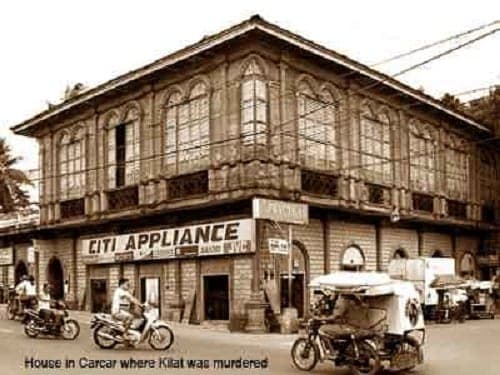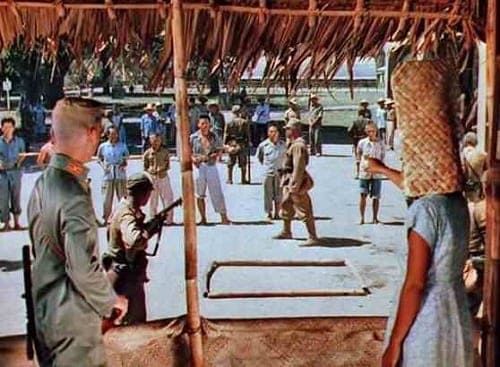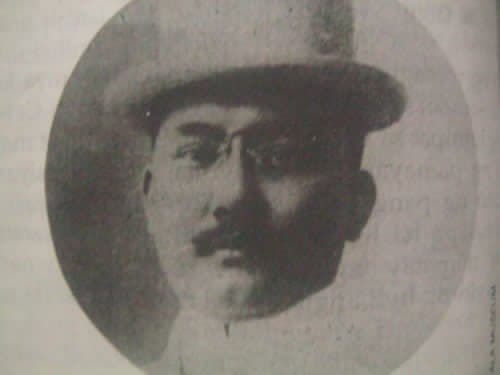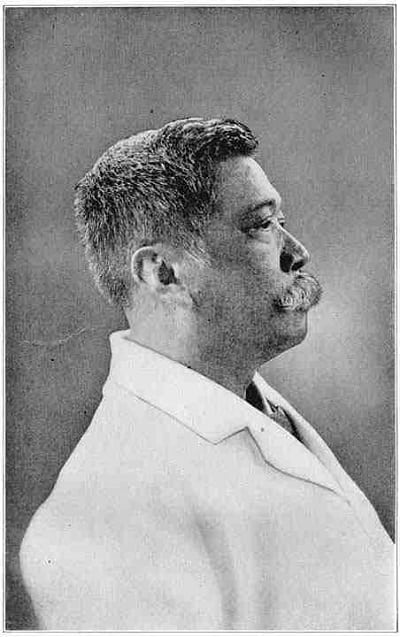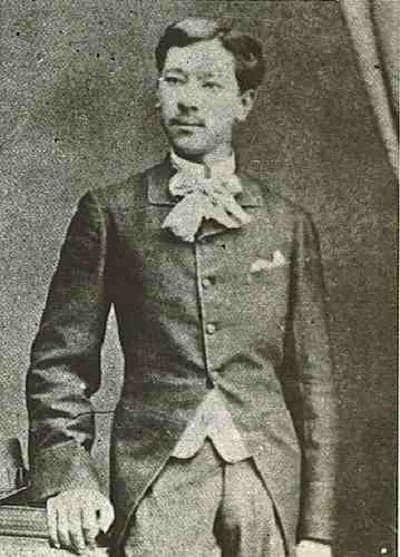10 Most Infamous Traitors in Philippine History
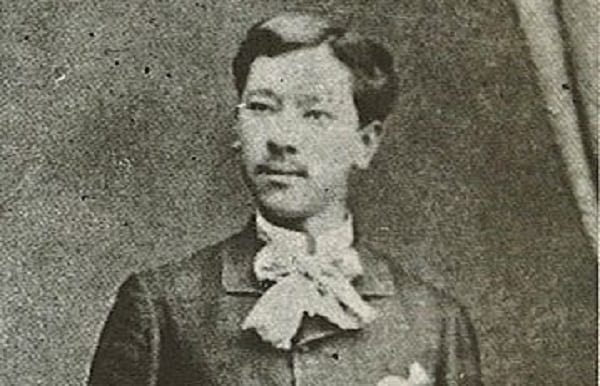
Judas Iscariot. Brutus. Benedict Arnold. These are but a few of the numerous famous personalities we’ve come to associate with the word traitor.
Unfortunately for us, the Philippines has also had its fair share of such characters. Countless acts of treachery and turncoatism have undoubtedly darkened several chapters of our history, their after-effects still being felt even up to now.
Also Read: 7 Intriguing Filipino Spies in History You Might Not Know
Although there are too many traitorous Filipinos to list down, here are ten we feel deserve to be mentioned due to their infamy and the magnitude of their treacherous acts:
10. Cecilio Segismundo
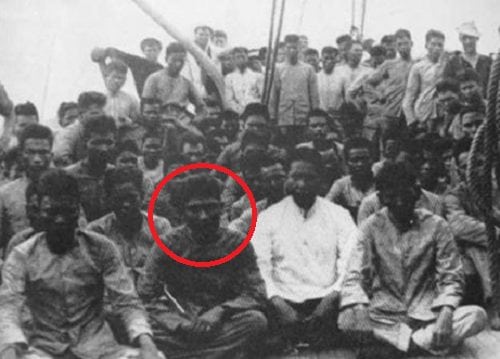
Notwithstanding the underlying bad blood between the Tagalogs and the Kapampangans—specifically the Macabebes—for the latter’s role in the capture of the Cavite-born Emilio Aguinaldo, it was actually an Ilocano who started the series of events leading to the capture of El Presidente.
A native of Ilocos Norte, Cecilio Segismundo first worked as a police for the Spanish but later defected to the Katipunan and then was assigned as a corporal and messenger under Major Nazario Alhambra. An embattled Aguinaldo—holed up in the remote Isabela town of Palanan—had tasked him to carry an important letter to his subordinates requesting reinforcements and supplies.
Was Emilio Aguinaldo also a traitor? Read This!
However, after almost a month of trekking in the harsh hinterlands, Segismundo surrendered to the Americans in Pantabangan town, Nueva Ecija. With the promise of a commission in the Philippine Army and a $300 reward, he revealed the whereabouts of Aguinaldo, allowing the American General Frederick Funston to capture him.
Although Aguinaldo would later say that the Americans forcefully extracted the information out of Segismundo, Funston’s officers countered that he talked freely after being well-fed and without ever being tortured.
9. Januario Galut
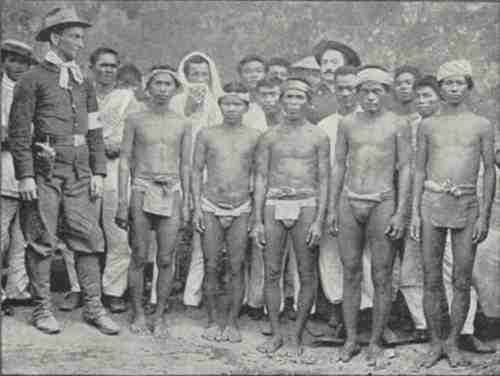
During the Philippine-American War, the Igorots — hardy mountaineers from the Cordilleras of northern Luzon island—sent a contingent of men to fight the Americans at Caloocan. However, the group soon fell out with the Philippine army and became U.S. allies, acting as guides for American troops in the rugged highlands of northern Luzon. A Tingguian Igorot, Januario Galut, led U.S. troops to a position where they could surround and defeat the forces of Gen. Gregorio del Pilar at Tirad Pass on Dec. 2, 1899. Source: Philippine-American War, 1899-1902 by Arnaldo Dumindin.
Just like the Spartan King Leonidas’ heroic yet ill-fated last stand against the Persians in the Battle of Thermopylae, General Gregorio del Pilar’s courageous but tragic end at the hands of the Americans in the Battle of Tirad Pass was made possible thanks to a traitor.
Also Read: 1 Things You Never Knew About Gregorio Del Pilar
As what his Greek counterpart Ephialtes did for the Persians, Galut—a Christian Igorot—guided the Americans to a secret pass that allowed them to encircle the Filipino positions which had earlier stood firm against their repeated onslaught. Caught in a pincer, the Filipinos continued to fight bravely but were overrun by the Americans in the end. Among those killed was del Pilar who was hit by a bullet to the neck as he was ordering his men to fight on.
READ: Gregorio del Pilar’s last words
Of the 60 original defenders, only 8 managed to escape. However, del Pilar’s heroic delaying action—which lasted for five hours—against the numerically superior and better-armed Americans bought enough time for Aguinaldo to escape and fight another day. As for Galut, no exact reason can be given for his betrayal; however, it is speculated that he experienced discrimination from his own countrymen, prompting him to switch to the American side.
8. Apolinario Alcuitas
One of the most tragic events to have happened during the Revolution concerns the untimely demise of Katipunan leader Pantaleon Villegas, better known as “Leon Kilat.”
A native of Negros Oriental, Villegas was commissioned by Emilio Aguinaldo to lead the planned revolt in Cebu on Good Friday on April 8, 1898. However, growing suspicion by the Spanish authorities forced him to launch the attack on Palm Sunday (April 3) instead, an event which would be known as the “Tres de Abril” revolt.
Trivia: Villegas allegedly owned a sigbin and wore several anting-antings
For a while, the Katipuneros succeeded in defeating the Spanish. However, enemy reinforcements from Manila forced Villegas to seek refuge in the town of Carcar on Holy Thursday (April 7). Fearful that the Spanish would retaliate against them for harboring the revolutionaries, the town’s leaders led by Florencio Noel and Fr. Francisco Blanco conspired to kill Villegas, with the assassin to carry out the job being none other than Villegas’ aide-de-camp Apolinario Alcuitas.
In the early hours of Good Friday (April 8), he—and along with a few others—stabbed and bashed Villegas to death while the latter was fast asleep inside his room after being inebriated with alcoholic drinks by his treacherous hosts.
7. Makabayang Katipunan ng Ligang Pilipino (MAKAPILI)
Out of all the groups that collaborated with Japan during World War II, MAKAPILI became the most infamous and hated.
Headed by the triumvirate of former Revolutionary General Artemio Ricarte, Pio Duran, and former Sakdalista Movement founder Benigno Ramos, the MAKAPILI came into existence after the Japanese started to conscript Filipinos to augment their military forces. However, its members became feared not because of their fighting prowess but because of their treacherous behavior which included spying and selling out their own people.
Did you know? Not all Japanese were cruel to the Filipinos.
Whenever a village or a town was suspected of guerrilla activity, the Japanese would round up the residents and then let the MAKAPILI members—who covered their faces with bamboo baskets except for their eyes—point out the suspected guerrillas or their sympathizers. In this way, many Filipinos, including the innocent ones, were dragged off by the Japanese to be tortured and executed.
6. Antonio Surabao
Although his name is not as well-known as the others, Antonio Surabao’s perfidious act in the “Tondo Conspiracy of 1587” makes him just as deserving as some of his more famous counterparts.
A servant of Pedro Sarmiento, the Spanish encomiendero who controlled Calamianes, Palawan, Surabao became privy to a brewing conspiracy hatched by prominent datus and nobles from Pampanga, Manila, and other Tagalog areas to overthrow the Spanish. Led by the likes of Agustin de Legazpi (Lakandula’s nephew), Magat Salamat (Lakandula’s son), and Tondo gobernadorcillo Martin Pangan, the conspirators hoped to defeat the Spanish by recruiting more allies from other places, including Borneo and Japan.
En route to Borneo, Salamat made a stopover at Calamianes where he also solicited the help of a local chief and that of Surabao. Instead of joining in, however, Surabao told his master who then immediately informed the authorities in Manila of the conspiracy. As a result, all the plotters were rounded up and sentenced to heavy punishments.
Trivia: Read about Datu Puti and find out why he’s a hoax.
The Spanish decapitated de Legazpi and Pangan and placed their heads on a gibbet as a warning to others while Salamat was also executed and his property confiscated by the government. Meanwhile, the other co-conspirators were made to pay heavy fines and undergo exile.
5. Miguel Vicos and Pedro Becbec
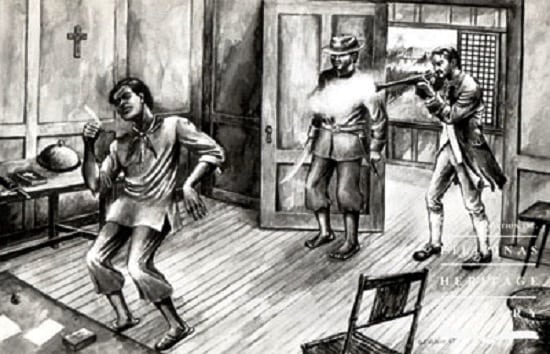
We can only speculate what might have happened had this dastardly duo failed to assassinate Diego Silang.
Before his death, Silang had been hugely successful in his uprising against the Spanish, even becoming the governor of Ilocos Sur. Threatened by his growing power and because the British—the occupants of Manila and Spain’s main enemy at the time—allied themselves with Silang, the Spanish sought to have him eliminated.
There are many conflicting versions of the motives of the two in killing Silang. Some hold that Vicos held a grudge against him or was induced by the Spanish clergy to assassinate him. In another, the Spanish promised Becbec a huge reward to kill Silang. Whatever the version, it is agreed that the duo went to Silang’s headquarters in Vigan and treacherously shot him while his back was turned to them.
In return for his efforts, Vicos was later reported to have been commemorated with a statue of a dog atop a monument by the Spanish in Bantay, Ilocos Sur as recognition for his “loyalty” to Spain. Becbec, on the other hand, was said to have been stabbed to death by Silang’s widow Gabriela when he was being paraded around town by the Spanish as their hero.
Did you know? Aside from Gabriela Silang, here are some other badass Filipina heroines.
4. Dominador Gomez
Before his betrayal of revolutionary leader Macario Sakay, Dominador Gomez had in fact lived an honorable life.
A doctor, a propagandist, and a labor leader, he had led union strikes against American companies and delivered fiery speeches against imperialism before he was finally arrested by the Americans in 1903. But instead of opting to languish in prison, he sold his soul to the devil and agreed to be the American emissary to convince Sakay to come down from the mountains.
Trivia: Macario Sakay’s last words
The charismatic Gomez succeeded in persuading Sakay and his men to give up their arms with the promise that the Americans would eventually grant independence and self-government to the people. Unfortunately for Sakay, the Americans arrested him when he arrived at Cavite.
In his anger, Macario Sakay’s officer General Leon Villafuerte demanded to know what was happening. Gomez was said to have uttered, “There’s no use fighting.” Incidentally, the case against Gomez was later dismissed and he went on to serve in the First Philippine Assembly.
3. Teodoro Patiño
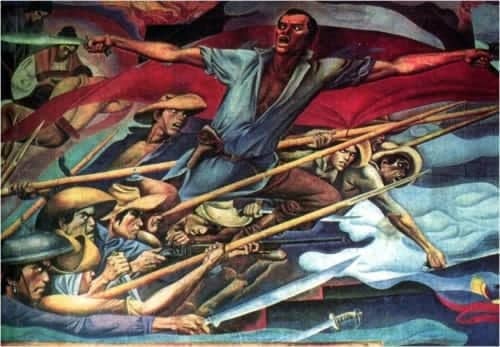
Owing to Teodoro Patiño’s disclosure of the Katipunan’s existence to the Spanish authorities, we may never know if the Revolution would have turned out in favor of the Filipinos since during that time, the revolutionaries were still busy gathering more men and arms for the uprising.
Even more deplorable, the reason for Patiño’s revelation to the authorities was too petty: a pay dispute.
There are different versions of the story, with one saying that he and a katipunero named Apolonio de la Cruz fought over a two-peso wage increase in their printing shop. A physical altercation between the two forced the shop to close down, and a subsequent search by Spanish authorities yielded documents and materials belonging to the Katipunan.
Also Read: 7 Fascinating Facts You Didn’t Know About Andres Bonifacio
In another version, both men were katipuneros who were also engaged in a pay dispute, prompting Patiño to tell his sister Honoria (also his wife in yet another version) about the secret society. Honoria, in turn, revealed the information to a head nun who then persuaded Patiño to tell the parish priest.
In any case, the Spanish authorities found out about the Katipunan’s existence thanks to Patiño, forcing its leaders to launch a premature uprising.
2. Felipe Buencamino
There might have been many turncoats and balimbings during the Philippine-American War, but only a few can arguably match the temerity of Felipe Buencamino.
As a judge for the Spanish government, he had once written to a governor-general exhorting “death to the traitors who disturb our public peace and tranquillity.” When the Revolution broke out, he initially sided with the Spanish but switched to the Filipino camp after being imprisoned by the former in Cavite. He later became a member of Aguinaldo’s own Cabinet and was even one of the framers of the Malolos Constitution.
However, the arrival of the Americans obliged him to switch sides yet again, earning him and his fellow Americanistas the ire of the revolutionaries. In fact, during a Cabinet meeting, the notoriously hot-headed nationalist General Antonio Luna slapped Buencamino square in the face and called him a coward for proposing to negotiate with the Americans. The two would later meet again in a heated confrontation two weeks later on June 5, 1899—the day Luna was assassinated.
READ: 13 Facts That Prove Antonio Luna Was An All-Around Badass
1. Pedro Paterno
Perhaps the only one who could top Buencamino’s turncoatism is none other than Pedro Paterno himself.
Considered an intellectual giant, Paterno is remembered today as an ambitious schemer who changed sides whenever it suited him. In fact, historian Ambeth Ocampo has called Paterno the first balimbing, and rightfully so.
READ: How Pedro Paterno “Invented” A Religion (And Got Called Crazy By Rizal For It)
A multi-talented poet, writer, and lawyer, Paterno first worked as a mediator between Aguinaldo and Governor-General Primo de Rivera. Months later, Aguinaldo would sign the Pact of Biak-na-Bato and leave on self-exile to Hong Kong. As reward for his efforts, Paterno requested a dukedom, a seat in the Spanish Senate, and payment of one million Mexican dollars for his work, all of which were rejected.
Did you know? Wartime Philippine President Jose Laurel was definitely not a traitor. Find out why.
Later when Aguinaldo returned, he wriggled his way into becoming the president of the Malolos Congress and then as head of his Cabinet. When the Philippine-American War broke out, he advocated accepting American sovereignty, something that did not sit well with his predecessor Apolinario Mabini and Antonio Luna.
After his capture by the Americans, Paterno formally switched sides and joined the American-sponsored First Philippine Assembly before finally dying of cholera in 1911.
Related Article: Inside The “Royal” Life of Philippine History’s Ultimate “Balimbing”
References:
Abeto, I. (1989). Philippine History Reassessed: A Collection of Undiscovered Historical Facts from Prehistoric Time to 1872. Integrated Publishing House.
Dumindin, A. (n.d.). Capture of Aguinaldo, March 23, 1901. [online] Philippine-American War, 1899-1902. Available at: http://goo.gl/FBLQrw [Accessed 11 Nov. 2014].
Mansueto, T. (2014). Leon Kilat Non-Cebuano led 1898 Cebu revolt vs Spain. [online] INQUIRER.net. Available at: http://goo.gl/fgESpT [Accessed 11 Nov. 2014].
Nakpil, C. (2008). The mark of Sakay: The vilified hero of our war with America. [online] philSTAR.com. Available at: http://goo.gl/t9WXed [Accessed 11 Nov. 2014].
National Historical Commission of the Philippines, (2012). A Secret Worth Two Pesos. [online] Available at: http://goo.gl/xE9R3T [Accessed 11 Nov. 2014].
Patnubay Online, (2012). April 8, 1898 – The Death of Pantaleon Villegas (Leon Kilat). [online] Available at: http://goo.gl/oJu48C [Accessed 11 Nov. 2014].
Additional Sources:
The Cardinal’s Sins, the General’s Cross, the Martyr’s Testimony, and Other Affirmations by Gregorio C. Brillantes
The Encyclopedia of the Spanish-American and Philippine-American Wars: A Political, Social, and Military History by Spencer C. Tucker
Philippine History by M.C. Halili
Jungle and Other Tales: True Stories of Historic Counterintelligence Operations by Duval A. Edwards
Philippine History by M.C. Halili
The Modern Principalia: The Historical Evolution of the Philippine Ruling Oligarchy by Dante C. Simbulan
The Philippine Islands by John Foreman
Brains of the Nation: Pedro Paterno, T.H. Pardo de Tavera, Isabelo de Los and the Production of Modern Knowledge by Resil B. Mojares
FilipiKnow
FilipiKnow strives to ensure each article published on this website is as accurate and reliable as possible. We invite you, our reader, to take part in our mission to provide free, high-quality information for every Juan. If you think this article needs improvement, or if you have suggestions on how we can better achieve our goals, let us know by sending a message to admin at filipiknow dot net
Copyright Notice
All materials contained on this site are protected by the Republic of the Philippines copyright law and may not be reproduced, distributed, transmitted, displayed, published, or broadcast without the prior written permission of filipiknow.net or in the case of third party materials, the owner of that content. You may not alter or remove any trademark, copyright, or other notice from copies of the content. Be warned that we have already reported and helped terminate several websites and YouTube channels for blatantly stealing our content. If you wish to use filipiknow.net content for commercial purposes, such as for content syndication, etc., please contact us at legal(at)filipiknow(dot)net
